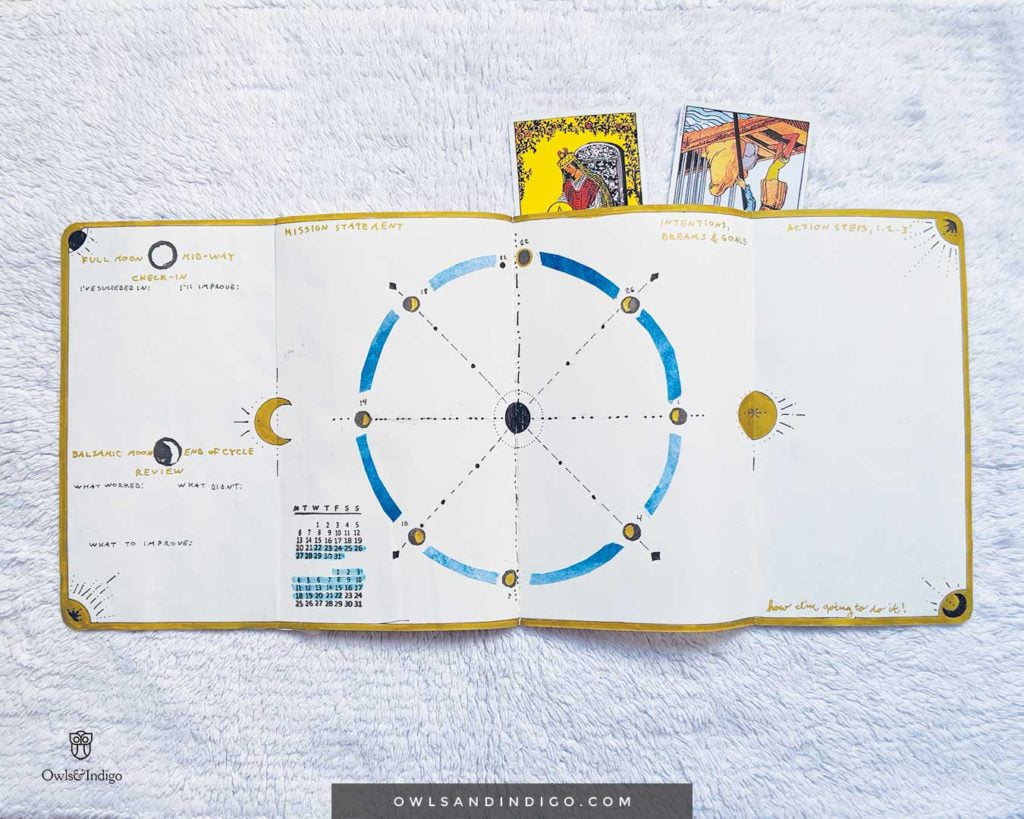Are you struggling with your mental health right now? Do you feel like your mental health is slipping? May is mental health month which is very important to me now that I have discovered my own struggles. We all struggle with our mental health from time to time, and as I write, the world is in lockdown due to the coronavirus global pandemic. We are all facing social isolation like never have before and it’s affecting everyone’s mental health.
One of the keys to calm down anxiety in your personal life and for dealing with anxiety at work is writing better goals. This is one of my top coping strategies for anxiety (and that’s because I am a planner, prepper, and fixer by nature, which can get me into overwhelming anxiety ridden territory from time to time.)
Good goals to have are ones that are S.M.A.R.T. and help you level up in life.
Refining your goals and writing S.M.A.R.T. Goals are natural ways to deal with anxiety, natural ways to reduce anxiety that directly address stress and mental health, and the stress impact on health overall.
Who Do S.M.A.R.T. Goals Work Best For?
S.M.A.R.T. Goals work best for anyone and everyone. This is goal setting for employees, goal setting for students, goal setting for families, and goal setting for self improvement and self growth. S.M.A.R.T. Goals can even be used for Spiritual Growth and Development tracking. S.M.A.R.T. Goals will also give you clarity, understanding, and refinement on goals to set for yourself at work. This technique can also help create a list of goals for students at work, in classes while learning, in personal lives, and for moving into and out of dorms. Seriously!
S.M.A.R.T. Goals should have a place of prominence in your selfcare toolbox and mental health toolbox right alongside anxiety relief techniques.
The Problem With Goals That Aren’t S.M.A.R.T.
Life will always throw curve balls at you and throw you for a loop, sometimes multiple times in one day. But that’s life, it’s part of the shared human existence that we all face. The problem is that life gets in the way of setting, maintaining, and achieving our goals. Oftentimes we are left feeling overwhelmed by life and like we don’t have any room left to actually live life.
There are days where my goals feel like an obligation and that I just don’t have the time or room for them in my life and that they are getting in the way of me actually living.
This is because the goals I set weren’t S.M.A.R.T. When I set my goal and wrote it down, I wasn’t specific enough, had no way to measure it, and didn’t make it attainable or easy for myself. I also found out after some soul searching that the goal I was failing to make progress on wasn’t relevant to my larger goals in life and didn’t have a deadline. Every time this happened, I failed and felt completely overwhelmed.
I’ve learned there are 3 types of goals that lead to me feeling overwhelmed:
B.H.A.G.’s The Big Hairy Audacious Goals
B.H.A.G.’s are overwhelming, well, because they are so big. It’s hard to know if you’re on track based on day-to-day tasks. A great example of this is “Make the world a cleaner place”. The world is very large and anything I do on a day-to-day basis is small. Knowing whether you’re on the right track is difficult to discern. B.H.A.G.’s are very important, because they inspire us and are what we shoot for, so I tend to break them down into smaller goals that all build on each other.
Missing Metric Goals
These are vague or not clear about what it means to be complete or reach a milestone. For example: “Read more”. What is “more”? Is it 1 book, 1 article? Is it 10? Not knowing how to measure a goal’s completion definitely gives me anxiety! I never know if I’ve reached the mark and then I push to do more, but realize it might not be enough and keep going in circles. It’s maddening!
Unrealistic goals
Unrealistic goals are, well, unrealistic. They can’t be accomplished. Like, “learn to breathe underwater”, or “grow a third arm”. Fantasy aside, there are many realistic sounding goals that are probably unrealistic. These are particularly devastating to my mental health because you just don’t always know if you can reach them, so when you fail, you feel really bad about it.
Unrealistic goals that lack refining because of how complex they are, cause stress. Many goals are not realistic goals. I don’t know about you, but I wish they taught how to set S.M.A.R.T. Goals in highschool, along with being taught how to do my taxes! Wouldn’t it be great if they taught you how to solve for this in high school?!
When we haven’t refined why we want to accomplish our goals, we can have feelings of inadequacy or incompetence and that has a negative impact on mental health.The more this happens it can turn into emotional baggage we carry into all areas of our life. Negatively impacting relationships, work, hobbies, etc. Leaving us to feel like we’re constantly failing, and persuade us to begin believing that we are a failure.
Stupid Goals, Bad Goals, and Poorly Written Goals impact your life negatively in all areas of your life. The stress and anxiety of bad goals can upset your personal life, work life, and mental health on an individual level. Bad goals always touch every area of your life, but there is a way forward to make a change for the better.

Writing Better Goals Will Manage Your Stress And Reduce Your Anxiety
The reason why you’ve failed to achieve your goals is not you, or your mental health. Yes, your mental health impacts your ability to complete a goal, stay focused, or see the world in a productive light. Though, in my experience it’s usually an unclear goal that creates confusion, leads to feeling overwhelmed, or uncertainty over what it means to complete it. And that impacts my mental health. The reason you failed is because the goals were too hard, unclear, or too complicated. The solution is better goal setting.
On the really bad days, ridden with anxiety and depression, I found myself asking “Why do I have so much anxiety?” “Why does anxiety happen?” “Does everyone have anxiety? Or am I the only one?” Some days I was even asking from a dark rainy place in my mind “why is it important to set goals? Why should I even care?” My lack of clarity and intention regarding my goals left me feeling overwhelmed with anxiety in my personal lifegoals and feelings of anxiety about going to work.
I knew there had to be healthy ways to deal with stress and ways to get rid of anxiety or at minimum ease anxiety with coping strategies and methods when it comes to my goals.
“Hi, my name’s Jenny, I have anxiety and I am a perpetual fixer.” I truly fell into a rabbit hole like I always do when I am trying to fix something in my life.
So, I set off on a google search: “how to calm my anxiety.” “how to decrease anxiety.” “how to manage stress and anxiety.” “how to reduce stress and anxiety.” “how to set goals and achieve them.” “how to simplify life.” “how to simplify your life.” “how to write goals…”
To save you from going down the rabbit hole, I want to share how I am managing stress and anxiety and mental health days at work that don’t start off on good footing.
Refine Your Intentions
Refining and honing your goals and intentions will help you actively care for your mental health. It’s really important that we get under all of the sub layers and subtext and finally arrive at the why behind the why behind the reason we want to achieve a goal.
If it sounds complicated, you’re right, it can be. But once we understand the deeply rooted reason we want something to change, then we can and will understand our true desires and truest inner self. We need to dig deeper into our motivations and let the unneeded layers fall away. Through exploring how to set better goals and what to do when you feel anxiety over your goals you are creating new neural pathways and tools to add to your selfcare toolbox. Writing S.M.A.R.T. Goals is how I refine and hone my goals, intentions, and dreams to help take care of my mental health.
These goal setting tips and techniques are perfect for personal and professional goals. As a jittery person, relieving anxiety is paramount to setting goals at work. If I’m anxious, my ability to do my job and work performance goals are going to suffer. So, if you’re like me, these goal setting tips and techniques are going to be perfect for you.
What Is A S.M.A.R.T. Goal?
Writing better goals will manage your stress and reduce your anxiety because it forces you to get to the root of what is most important to you. This helps you really face why you want to accomplish your goals and sheds light on whether or not you are doing it for the right reasons. This new way of writing your goals leads to “S.M.A.R.T. Goals.”
What is goal setting and what the heck is a S.M.A.R.T. Goal? The S.M.A.R.T. Goal technique creates goals that you are going to be able to actually accomplish. S.M.A.R.T. Goals are Specific, Measurable, Attainable, Relevant, and Time-Bound.
Writing better goals to manage stress and reduce anxiety to take control of your life is extremely important and empowering when taking care of your mental health. Caring for your mind this way is a form of self care that helps aid the management of anxiety and depression.
It’s important to set S.M.A.R.T. Goals because they help you achieve your greatest aspirations in life and accomplish those life goals that seem too far off to think about, or even consider. If our goals are easier to understand we can prevent the feelings of stress. With clarity about what it means to complete the goal, you will never be confused about where you’re at, and can manage your stress. Remember: Think of S.M.A.R.T. Goals as a form of self care that helps aid the management of anxiety.
S.M.A.R.T. Goals can help you gain traction and make forward motion easier on your goals, intentions and dreams, but only if they are aligned with your life goals and yearly goals. Using the S.M.A.R.T. Goal setting technique and checklist help take big hairy audacious goals (B.H.A.G.’s) and turn them into smaller manageable actionable steps. Sometimes you will even realize that the B.H.A.G. is actually made up of many smaller S.M.A.R.T. Goals that might have shorter timelines that are all linked and lead up to the B.H.A.G.
S.M.A.R.T. Goals ease your anxiety because they are clear and easy to understand. S.M.A.R.T. Goals change the way your mind works and the way you think about your intentions. S.M.A.R.T. Goals reveal the why behind the why, behind the why you want to achieve your goal.

When I have a goal, I start by thinking about the end result and what that should look like. This allows me to visualize what we will achieve and map the most direct route to accomplish that goal.
—David Thomas, CEO, Evident ID
How To Write S.M.A.R.T. Goals & Feel Accomplished
Lack of refinement causes confusion and lack of understanding our real, and deeply held, motivations. When writing your S.M.A.R.T. Goals be sure to know how you measure success. Is it the number of times something is completed? A percentage of completion accomplished? An emotional feeling? A physical feeling?
S.M.A.R.T. Goals are Specific, Measurable, Attainable, Relevant, and Time-Bound. Every time you write a goal, intention or dream, you need to make sure they are S.M.A.R.T. and ask yourself the following questions:
Specific: What specifically do I want to accomplish?
Specific means an actual exact amount or level you’d like to reach. It should be a number or percentage: 1, 10, 80%, 3 out of 5. If you have words like “more” “better” “less” “lighter” etc then your goal will not be specific. You can also select exact feelings and emotions that you want to achieve as well. You just need to be sure to have a consistent defined way to measure them. In my fertility tracking journal I also track my mood on a five point scale that I have been using for many years now.
Measurable: How will I measure the achievement of my goal?
Measurable = Metrics and Data! (we are data nerds in our house in our own distinctly different ways.) It’s a thing we can count or measure, something tangible we can keep track of. If you can’t measure it easily and obviously it’s not specific. ie: books, leads, sales, journal entries, friends, plants, etc.
Attainable: What are the specific attainable steps to reach my goal?
If you can’t map out the exact steps to get to the goal, or if any of the steps will always be beyond your grasp it probably isn’t a S.M.A.R.T. Goal. For example: if my specific measurable goal was to be 6′ 0″, but I’m 5′ 2″ and not growing anymore, it’s not a S.M.A.R.T. Goal (fun fact: I am actually 5’ 2”). ALSO, this kind of goal is beyond my ability to control. I can’t take action to make it happen.
Relevant: How does this goal relate to my long-term goals, intentions, and time investments?
IF your SMART goal doesn’t relate to achieving one of your B.H.A.G.’s or life goals you’ll find you won’t have motivation to complete it. It will lack meaning in your life and if anyone else was counting on you, you’ll just let them down. So being very clear about this is important. No one will fault you for being honest, especially yourself.
Time-Bound When do I want to complete my goal? / What is my deadline?
Many people set a goal but forget to put a time frame down. Without a time frame you lose accountability. Completing a goal in a week has a very different intensity from completing the same goal in a year. So give yourself a realistic time-frame, but not so long you’ll lose interest or just get bored.
After you have asked yourself these questions it’s time to break down your goal into easier bites. This is where you write down “How I’m Going To Do It” and break down your goal into 3 achievable steps. These three steps need to be attainable and each help remove barriers to accomplishing your goal in the long run.
Now that you have three actionable steps that support your goal, it’s time to transfer them into your daily routine and integrate them into your daily task list. This is also the perfect place for a habit tracker to help keep you accountable and prevent you from falling off the bandwagon. I’ll talk about habit trackers, daily lists, and routines in another article, because those topics can get unruly and overwhelming!
I’m sure this sounds like A LOT to keep in mind when you’re writing your goals, which is why I’ve created this free printable checklist and journal pages for you to help you write S.M.A.R.T. Goals. This free printable has a checklist to make sure your goals are S.M.A.R.T., related goal setting ritual ideas, journaling pages that help you reflect and break down your goals, a 30 day tracker, and a 28 day moon calendar tracker for your goals. Remember, less is more, especially when you’re goal setting, too much stuff and unrefined detail causes overwhelm and anxiety.
How I Write S.M.A.R.T. Goals

I write S.M.A.R.T. Goals every month. Sometimes there are multiple goals in one month and every once in a while they are goals that I have already achieved that I want to keep working on to level up and refine further or to ingrain into habits. Even though my S.M.A.R.T. Goals are created a smidge out of order, (R.T.S.A.M. I’m not sure who is retweeting Sam…), they are always Specific, Measurable, Attainable, Relevant, and Time-Bound.
Here is how I write S.M.A.R.T. Goals:
1. Make sure that my goal relates back to my overarching goals that I set for the year. (Relevant)
2. Define the duration of the goal, which is always 28 days. (Time-Bound)
3. State How I’m Going To Accomplish My Goal. (Specific)
4. Break The Goal down into 3 actionable steps. (Attainable)
5. Schedule & Track My Goal’s Progress In My Daily Life (Measurable)
I track all of my goals on a 28 day cycle, because it allows me to align my goals with the moon phases. I set a new goal on every new moon, celebrate the goal on every full moon, and review my progress on the last crescent moon of the lunar month.
Setting goals in alignment with the moon phases also gets me outside to observe nature and the moon itself. Looking up at the moon every night when I’m thinking about my goals is very inspiring and helps my mental health stay strong and keeps me motivated to accomplish my goals. But you can certainly set your goals by the calendar month, quarters, or year timespan. If you choose a year timespan, remember that you WILL have more than one S.M.A.R.T. Goal that makes up the yearly B.H.A.G.
Every single month in addition to a bullet journal monthly plan with me that you’d find in any bujo, I always make sure to have a monthly moon calendar and a habit tracker to track my goal’s progress. My moon calendars are always set up in the form of a wheel and my habit trackers vary depending on how artistic I’m feeling. See my past moon calendars here. If you want to set goals in alignment with the moon phases like I do check out one of my most recent New Moon Goals Setting Rituals Here for measurable goals examples.
These are some of my favorite habit trackers that work really well for tracking B.H.A.G.’s and S.M.A.R.T. Goals:



The habit trackers are from my monthly personal goal setting practice and my personal goals examples list. Sometimes I am able to create personal goals examples for work because my personal success goals and work goals for Owls&Indigo are so closely tied together. Recently I shared a habit tracker, which is the measurable part of goal setting over on instagram that has become one of my favorite trackers todate. This planet inspired habit tracker helps me stay on top of my exercise goals.
What To Do When You Feel Anxiety About Your Goals
I have certainly felt anxious about my goals and even depressed when I wasn’t seeing progress being made on them. When I feel this way I have a good hard look at my goals to make sure that they are indeed S.M.A.R.T. Goals. If they don’t pass this checklist test, then I either let them go or pivot and rewrite them.
However, IF they pass this test I proceed with a G.Y.S.T. Day or Afternoon to get back on track. Which helps me to re-align with my goals. Sometimes I find that they are in need of simplifying, and being broken down into smaller S.M.A.R.T. Manageable Goals.
Rituals are another powerful way to regain control over your emotions and squash the anxiety you are feeling about your goals. Try to develop or find a centering ritual that calms down your thoughts and brings you back to the current moment. This could be meditating, cleaning, journaling, or something more spiritual.
When I feel this way I tend to focus on the concept of “cleaning” and “clearing away the physical and mental clutter.” Check out the ritual ideas in my free printable download How To Write S.M.A.R.T. Goals here:
I’ll talk about journaling and C.B.T. acceptance & reframing Techniques in another article, because those topics are much more in depth, complicated, and deserve their own prominence in a devoted article.
By stopping the unintentional practice of writing haphazardly half baked goals and replacing them with S.M.A.R.T. Goals you will gain self-confidence, better work performance, and better relationships, not to mention the glowing feeling of achieving your goals. This is how I refine and hone my goals, intentions, and dreams to help take care of my mental health.
My goal in life is to help you become a happier healthier human being, and I hope that this article helps you make a goal, make a list of goals to set for yourself, reach your goals, and gives you new mental health goals to strive for that make you stronger.










